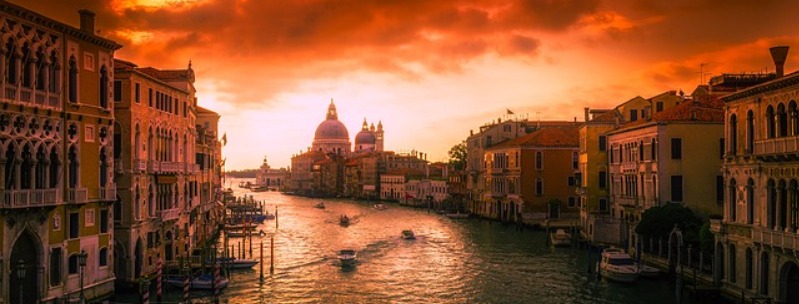Regions of Italy
Situated in Mediterranean Europe, Italy has land frontiers with France in the northwest, Switzerland, and Austria in the north, and Slovenia in the northeast. The peninsula is surrounded by the Ligurian Sea, the Sardinian Sea, and the Tyrrhenian Sea in the west, the Sicilian Sea and the Ionian Sea in the south, and the Adriatic Sea in the east. Italian is the language of the majority of the population but there are minorities speaking German, French, Slovene, and Ladino. Sixty-seven percent of the population lives in cities.
Italy is geographically divided into 20 regions (regioni). A kaleidoscopic reality with an innate vocation as a cultural melting pot, ready to be discovered.

1. Piedmont
The Piedmont Region stretches on the buttress of a great Alpine arc: Maritime, Cotian, Graian, Pennine Alps, and a little part of the Lepontine Alps. It includes two large hilly areas, the Langhe and the Monferrato. The Po river has its source in Piedmont. The region is crossed by several Alpine streams flowing into the Po. Many Alpine lakes, with those of the morainic area of the Canavese, dot the region. In the eastern part, we find two bigger lakes: Lago Maggiore and Lago d’Orta.
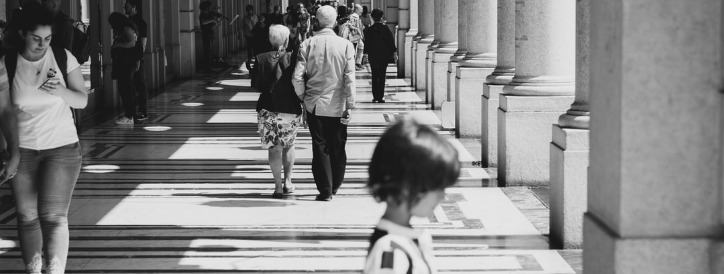

Cities: The regional capital is Turin. Other important cities are Asti, Alessandria, Cuneo, Novara, Vercelli, Biella, and Verbania.
Things to do in Piedmont Italy
The great ski centers of Sestrières, Bardonecchia, Sansicario; the district of the Langhe and the Lakes Orta and Maggiore.
Art
In Turin and in Susa interesting traces of the Roman Age can be found. The religious Romanesque-Gothic architecture is remarkable: splendid examples are the Abbey of Vezzolano, the Sacra di San Michele, the Abbey of Staffarda, St. Antonio di Ranverso, St. Andrea in Vercelli and other churches in Saluzzo, Chieri and Ciriè. The Baroque style has greatly influenced the appearance of most Piedmontese cities, especially in Turin, the capital of Dukedom of Savoy: Palazzo Carignano, Palazzo Madama, the majestic Castle of Stupinigi, the basilica of Superga, which rises on a hill near Turin are outstanding examples.
Museums
In Turin the visitors should not miss a visit to the Royal Armory, one of the richest in Europe; the Egyptian Museum, the second most important in the world after the one in Cairo, with the precious remains of the ancient civilization, which built the Pyramids. The Sabauda Gallery houses pictorial works of the Piedmontese, Dutch and Flemish schools, as well as some valuable works of the great Tuscans, such as the Beato Angelico and the Pollaiolo.
In Vercelli, the Borgogna Museum houses the works of the local Renaissance painters; in Alessandria, the Civic Museum and the Pinacoteca deserve a visit. Asti’s art-gallery houses both fifteenth-century and eighteenth-nineteenth-century paintings. Cuneo’s Civic Museum is specially reserved for the local history and artistic tradition.
In Novara, an interesting Epigraphic Museum can be seen in the fifteenth-century cloister of the Cathedral.
2. Aosta Valley
Aosta Valley is Italy’s most mountainous region, completely encircled by the most famous and magnificent Alps peaks: the Monte Bianco, the Matterhorn, the Monte Rosa, and the Gran Paradiso. The latter is located in the heart of a spectacular National Park, which is home to magnificent ibex, chamois, and eagle specimens. Numerous glaciers feed a rich system of streams that flow in the Dora Baltea basin at the bottom of the respective valleys. The distinctly Alpine nature of this region may be recognized in the pine forests, which extend up to relatively high altitudes before giving way to extensive pasturelands. There are several little Alpine lakes, charming jewels placed in spectacular alpine settings. The major medieval passes are today’s important lines of communication, thanks to the tunnels at Monte Bianco and Gran San Bernardo.
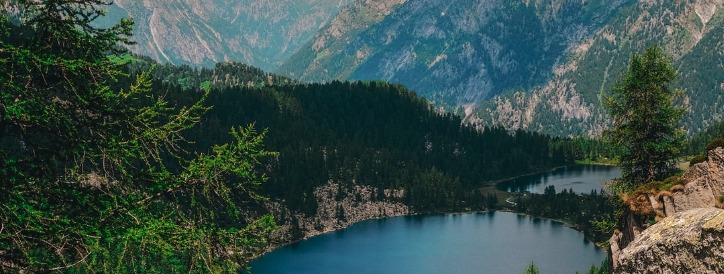
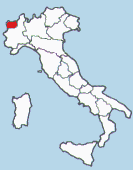
Cities: Aosta is the capital of the region, which is ruled by a special statute, where the Italian and French languages are officially recognized.
Things to do in Aosta Valley Italy
The Matterhorn, the Monte Rosa, the Monte Bianco, which can be reached by the loftiest cableway in Europe; the beautiful National Park of Gran Paradiso; in winter, the numerous ski resorts. There are typical villages with quaint local houses (rascards). St. Vincent and its Casino offer a wide range of entertainment.
Art
Important traces of the Roman Age can be found in Aosta: the city walls, the theater, Augustus’s Arch, and the Pretorian Gate. Visitors can admire the Romanesque Cathedral, which dates back to the eleventh century. The Sant’Orso Church is a good example of medieval architecture. Many are the fortified castles in the Aosta Valley; most of them are in perfect condition and open to visitors; many have become museums of local history. The most famous are the castles of Fénis, of Aymavilles, Issogne, and Verrés.
3. Lombardy
The Lombardy region envelops the main part of the Po Valley. The Lepontine, Rhaetian, and Orobic Alps form its northern borders. It encompasses a hilly territory containing the great Italian lakes, ranging from the east slope of Lago Maggiore to the Lakes of Varese, lseo, and Como, as well as the northern part of Lake Garda. Because of the Po and its tributaries, this region is abundant in water.
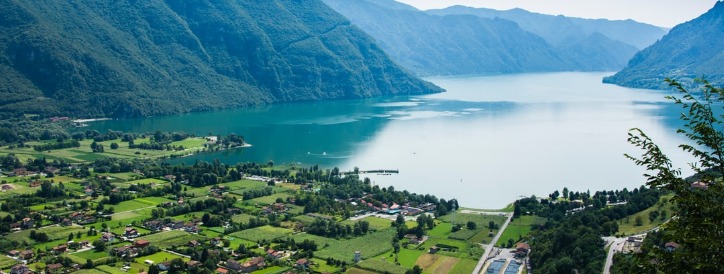
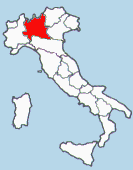
Cities: The regional capital is Milan. Other important cities are Bergamo, Brescia, Como, Varese, Sondrio, Pavia, Cremona, and Mantua.
Things to do in Lombardy Italy
The peninsula of Sirmione on Lake Garda and the “Gardesana” coast; the Lomellina and the Valtellina districts.
Art
Lombardy is the birthplace of Romanesque architecture, with stunning examples in every major city. The Cathedral of Milan is the most stunning Gothic monument. The Renaissance era left magnificent mansions and exquisite cathedrals. During the fifteenth century, Lombard painting achieved its pinnacle.
Museums
There are several sections for painting, sculpture, and applied arts in the Sforza Castle in Milan; the Brera Gallery, which houses some of the all-time masterpieces of painting; the Poldi Pezzoli Museum, which houses a very rich private collection of paintings of great masters, fittings, art objects, and ancient jewelry; and other masterpieces of painting can be seen in the Pinacoteca Ambrosiana. The National Museum of Science and Technology is dedicated to railways and aviation.
The Roman Museum in Brescia features an interesting exhibit devoted to the Christian Age. The Civic Museums in Como feature substantial sections dedicated to local history and art.
In Cremona, the Civic Museum includes mosaics and antiquities of the Romanesque period, while the Stradivariano Museum displays the history of the famed old violin manufacturers.
Bergamo is home to the prestigious Carrara Academy Gallery. The Ducal Palace, Gonzaga’s Palace, and the Museo del Risorgimento are all located in Mantua.
There are civic museums for archeology and painting in Pavia.
4. Trentino-Alto Adige
Trentino is primarily a mountainous region, rich in rivers, torrents, and countless lakes, as well as clusters and chains of breathtaking mountains divided in two by the Adige valley. The glaciers of the Adamello-Presanella-Care Alto and Brenta groups can be found to the west. To the east are the Lagorai, Latemar, Fassa Dolomites, and Pale di S. Martino groups. Many alpine valleys branch off from the Adige valley, including the Valsugana, Vallarsa, Val di Non, Val di Sole, Val di Cembra, Fiemme, and Fassa, as well as the valleys Giudicarie and Rendena. The main lakes are Garda, Caldonazzo, Tovel, and Ledro; thermal waters flow from springs with medicinal characteristics. The dolomitic slopes and vast tablelands of Folgaria, Lavarone, and Pine are covered in dense coniferous forests. Three natural parks, Adamello-Brenta, Paneveggio-Pale of S. Martino, and Stelvio, protect the alpine environment’s typical fauna and vegetation, including the bear.
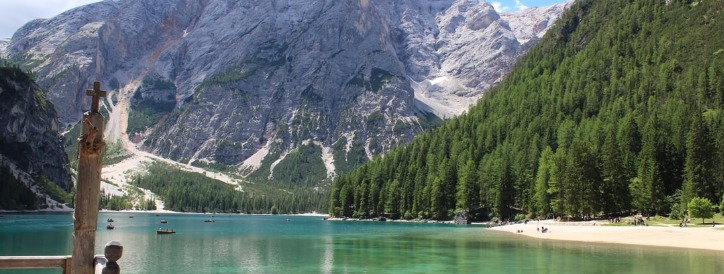
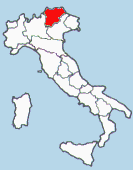
Alto Adige (South Tirol), Italy’s most northern region, is located in the center of the alpine circle and has a land area of 7,400 square kilometers. Its environment is diversified, with valleys and mountains following each other, ranging from the hilly zone of Ortles (Solda, Trafori, Val Martello) to the highest peaks of the Dolomites and the porphyry cliffs of Bassa Atesina. The Dolomites, which derive their name from the specific calcareous rock from which they are composed, form a dominant and spectacular picture of the Altoatesine Alps. Their ancestors lived 150 million years ago, during the Triassic period. These mountains, formed by an ancient sea and distinguished by their distinctive hue, have long captivated naturalists and poets. A third of the Altoatesino territory is protected by a landscape and environmental profile, which guarantees and promises interesting walks along the following itineraries: the Natural Park of Sciliar, the Natural Park of Puez-Odle, the Natural Park of Monte Corno, the Natural Park of the Dolomites of Sesto, the Park of the Vedrette di Rics, the Park of the Sarentine Alps, and the Park of the Stelvio.
Trentino Cities: The independent province of Trento is endowed with a special statute that gives it particular legislative authority. Trento is the administrative headquarters of the province and of the region Trentino-AltoAdige. Rovereto is the second center of the province, a city of culture and industrial sites.
Alto-Adige Cities: The independent province of Bolzano is endowed with a special statute. Bolzano in the main town of the province and the seat of the local government. Other centers are Merano, the capital of Tirol, Bressanone, Brunico, and Vipiteno.
Things to do in Trentino Italy
Earthen pyramids at Segonzano in the Val di Cembra; Val di Genova, a picturesque alpine valley; the Alto Gard Trentino, the Dolomites, the great arena of alpinism, traversed by a stitched network of excursionist lanes and ways; numerous antique castles which dominate the principle valleys: Castel, Beseno, Sabbionata, Drena, Stenico, Caldes, Thun, Pergine and Ivano. At Trento: The castle of Buonconsiglio and the palace of Albere, the residence of provincial art museums; the churches which hosted the famous “Council of Trent”, the romantic Cathedral, and the church of S. Marina Maggiore. Naturalistic and archaeological collections are lodged in the natural science museum of Trento.
The diocesan museum of Trento conserves precious testimonies of sacred art, wooden artifacts, and Flemish tapestries. At S. Michele in Adige, there is a museum on the practices and customs of the Trento people. At Rovereto, the Castel holds one of the greatest museums on the Great War.
Art
Trento, located on the border between the German world and northern Italian civilization, offers a unique and dynamic figurative panorama in which the contributions of several civilizations have combined to generate art with real distinctive features.
The oldest artistic relics date from the late medieval period and are housed in the churches of S. Pietro in Bosco in Ala, Tenno, and S. Romedio, along with several finds from the Roman and Paleochristian eras. The Cathedral of S. Virgilio in Trento and the Basilica of S. Lorenzo are the most important Roman-era monuments. Trento’s Renaissance-style structures and churches include the Castle of Buonconsiglio, the Palace of Albere, and the church of S. Maria Maggiore.
The churches of Civezzano, S. Apollinare, S. Zeno, Finera di Primiero, and Vigo di Fassa all have typical Gothic architecture. The “Ciclo del Mesin” in Trento’s Torre Aquila is a little jewel of European Gothic painting. In the first part of the sixteenth century, there was a flurry of pictorial work, as well as a blossoming activity in the minor arts. Several testimonies of the paintings have been preserved in churches and structures.
Things to do in Alto-Adige Italy
Alto Adige is a land of castles. To visit and to live in: as some of them have been transformed into hotel castles, it is possible to enjoy a hospitality that has, in itself, an ancient taste. The following is a list of the names of the oldest castles to visit: Castel d’Appiano, Appiano; Castel Ganda, Appiano; Castel Roncolo, Bolzano; the episcopal castle of Bressanone; the Tures castle of Campo Tures; Castelbello of Castelbello; Casteldarne of Casteldarne; Castel Monteleone of Cermes; the convent of Sabiona of Chiusa; Castel Presule of Fié; the abbey of Monte Marina, Malles; the princely castle of Merano; Castel Forte of Ponte Gardena; Castel Rodengo of Rodengo; Castel Badia of St. Lorenzo; Castel Scena of Scena; Castel Coira of Sluderno; Castel Font ana of Bolzano; the abbey of Novacella of Varna / Novacella; Castel Velturno of Velturno and Castel Tasso of Vipiteno.
5. Veneto
The Veneto region comprises the eastern Po Valley and a portion of the Dolomites to the north. Water abounds throughout the vast plain, which includes the Po delta. It is an area that combines two distinct and distinct characteristics of Italian nature: the lagoon zone (Venice) and the spectacular Cadore Dolomites.

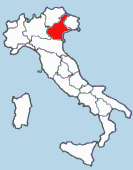
Cities: The regional capital is Venice. Other important cities are Verona, Padua, Vicenza, Treviso, Rovigo, and Belluno.
Things to do in Veneto Italy
The Venetian islands of Murano, Burano, and Torcello; Chioggia; the canals of the Brenta and the Veneto villas. Visitors can admire the enchanting and unique lagoon and the majestic reddish spires of the Dolomites.
Art
In the region numerous important Roman traces can be found: the best-known example is the Arena of Verona. In the area around Venice, Byzantine influences are visible (St. Mark and the Cathedral of Torcello); in the hinterland, away from the sea, there are many outstanding examples of Romanesque and Gothic art. The Renaissance palaces are numerous and of great value.
Museums
In Venice: the Academy Galleries house the major collections of Venetian paintings from 1300 to 1700; the G. Franchetti Gallery houses important paintings, while the Guggenheim collection exhibits international works of contemporary art.
In the Palazzo Grassi, exhibitions of international interest are organized every year. In this beautiful city, there is also: the Museum of eighteenth-century life in Venice with tapestries, attire, furniture, and paintings; the National Gallery of Modern Art, the Oriental Museum and the Correr Museum, which is reserved to Renaissance masterpieces.
In Verona, the Civic Museum of Art, which is devoted to the great Verona painting, the Archaeologic Museum, and the Museum of Frescoes can be visited. Vicenza offers the Civic Museum (ethnology and archaeology) and the Pinacoteca. In Padua the famous Scrovegni Chapel, with Giotto’s frescoes, can be admired; the Civic Museum and the botanic garden, the oldest in Europe, can be admired.
In Treviso, there is the Museum of the Casa Trevigiana with modern furniture and sculptures. Rovigo has the Gallery of the Concordi (Venetian school from the fifteenth to the eighteenth century) and the Civic Museum of the Polesine Civilization.
6. Friuli-Venezia Giulia
The Friuli-Venezia Giulia region is divided into three sections: a flat region extending from a morainic amphitheater to the Tagliamento river and the Adriatic coastline, with its plain and lagoons; a pre-Alpine section containing the Carnic Pre-Alps; and an Alpine section containing the Carnic and Julian Alps. The Carso region contains fascinating geological structures known as “Doline” as well as numerous grottoes.
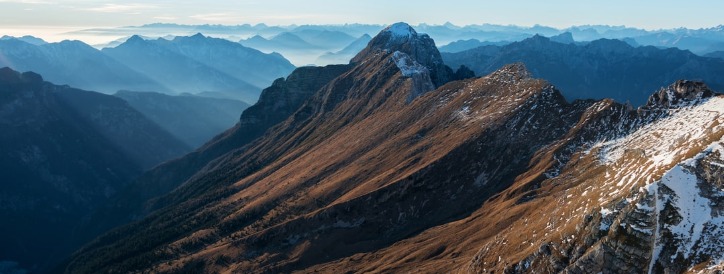
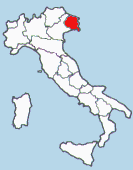
Cities: The regional capital is Trieste, ruled by a special statute; the other important cities are Udine, Gorizia, Pordenone.
Things to do in Friuli-Venezia Giulia Italy
In the Carso area, there is the Gian Grotto, near Trieste; on the sea there are Duino and the Sistiana bay; the Miramare Castle, built during the nineteenth century by Maximilian of Austria, looms over the Adriatic Sea.
Art
The ancient Romans left many remarkable traces, mainly at Aquileia, which is a rich and famous archaeological center.
In Grado and Cividale, there are important paleochristian architectonic examples of Byzantine style. The Basilica of Aquileia, which is in the Romanesque-Gothic style, houses splendid mosaics.
Museums
In Trieste there is the Revoltella Civic Museum, which holds an important collection of sculptural and pictorial works, from the nineteenth and twentieth centuries; the Civic Museum of the Sea, which shows the history of navigation from its origins to the end of the last century, with models, instruments and projects. The Civic Museum of Risorgimento is an interesting review of Trieste’s struggle for freedom; the Civic Museum of Art History holds a remarkable collection of archaeological relics, from the Paleolithic to the Roman Age, with a very rich epigraphic section.
In Gorizia, the fortified castle includes the Museum of History and Art, which houses interesting collections of objects and customs of the civic history: the Provincial Museum offers a review of local artists between the eighteenth and the twentieth centuries; moreover, there is the Museum devoted to World War I.
In Udine, the Civic Museum and the Galleries of History and Art hold remarkable collections of archaeology, sculpture, painting, ceramics, coins, and jewelry. In the Civic Museum of Pordenone precious wood
7. Liguria
Liguria forms a majestic arc facing the Tyrrhenian Sea, with the Gulf of Genoa in the midst. It is a rugged and hilly territory that contains a portion of the Maritime Alps and the Ligurian Apennines, with spurs that plummet practically everywhere into the sea, leaving little room for the lowlands that form a limited shoreline.
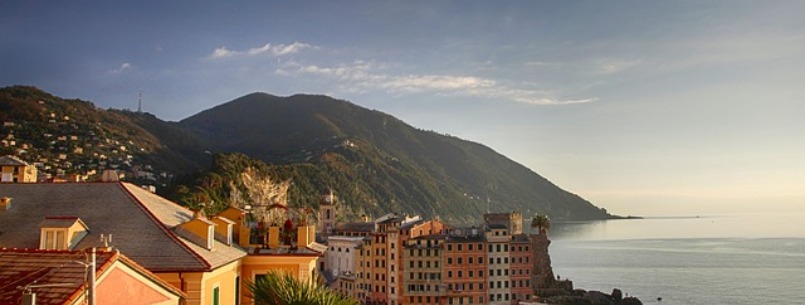

Beautiful scenery can be seen in Liguria. The Riviera di Ponente (to the west), from Ventimiglia to Genoa, and the Riviera di Levante (to the east), from Genoa to La Spezia, split the territory. The Riviera di Levante’s terminal strip is known as “Le Cinque Terre” (the Five Lands) and is still a wonderful example of an intact landscape today.
Cities: The regional capital is Genoa. Other important cities are Imperia, Savona, and La Spezia.
Things to do in Liguria Italy
The inland, with Dolceacqua, Balardo, the Lunigiana; Portofino, one of the most fascinating resorts in Liguria, San Fruttuoso, Punta Chiappa, the Natural Park of Capo Noli.
Art
Ruins of the Roman civilization can be seen in Ventimiglia and in the Lunigiana district. In the region, examples of Romanesque architecture are numerous, such as St. Paragorio in Noli. Important medieval traces, such as towers, walls, and castles, dating back to the Maritime Republics, can be found in the Riviera di Ponente. A lot of fine examples of Baroque architecture can be also admired.
Museums
In Genoa, the tourist should visit the Gallery of Palazzo Bianco, which houses an important collection of Ligurian painters, from 1400 to 1700; the Gallery of Palazzo Rosso, which holds a very rich collection of furniture, Ligurian ceramics and Chinese pottery; the National Gallery of Palazzo Spinola, with its important paintings; the Museum of Oriental Art has treasures collected over the centuries by the Genovese navigators.
In Nervi, you can visit the Naval Museum. Ventimiglia has the Archaeologic Museum with Paleolithic relics. Sixteenth-century paintings can be admired in the Civic Pinacoteca in Savona. The statue-stelae of the Lunigiana are very interesting: they can be seen in La Spezia.
8. Emilia-Romagna
The Apennines compose half of the land of Emilia Romagna; the other half is a wide plain that reaches the Adriatic Sea. The beach is sandy and flat, with a characteristic lagoon and marshy section (the Valli of Comacchio).
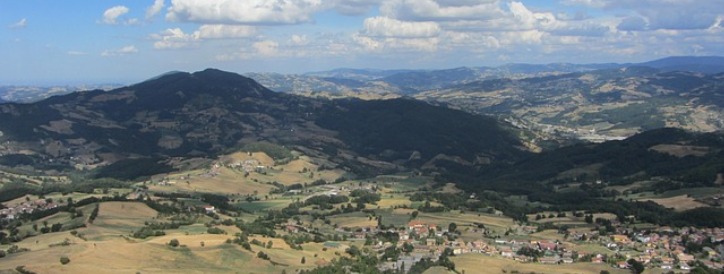
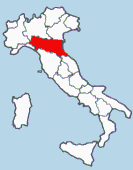
Cities: The regional capital is Bologna. Other important cities are Parma, Ferrara, Modena, Piacenza, Ravenna, Forlì, Reggio Emilia.
Things to do in Emilia-Romagna Italy
In Ravenna: the splendid Mausoleum of Galla Placidia, erected in the fifth century A.D. and the tomb of the great poet Dante; the Mausoleum of Theodoric and the magnificent basilica of Sant’Apollinare in Classe.
Art
Rimini and Ravenna, the capital of the Western Roman Empire in the fifth and sixth century A.D., have significant Roman remnants, as do the spectacular Christian-Byzantine monuments (the exquisite mosaics). The Cathedrals of Modena, Piacenza, and Ferrara all include Romanesque Longobard examples, and the Baptistery of Parma has some noteworthy sculptural works. Piacenza and Bologna feature excellent examples of Gothic, Renaissance, and Baroque styles.
Museums
The Pinacoteca Nazionale, with three sections devoted to painting from the fourteenth to the eighteenth centuries; the Museum of Industrial Art, which exhibits furniture, objects, and sacred relics from the sixteenth to the eighteenth centuries; and the Civic Archaeologic Museum, which houses very interesting prehistoric and Etruscan relics, are all located in Bologna.
The Cathedral Museum houses sacred relics, paintings, and sculptures; the Civic Museum houses bronze, ceramics, and frescoes; the National Archaeologic Museum houses precious ceramics (Attic vases with red figures); and the Pinacoteca Nazionale houses pictorial works from the fourteenth century to the present day.
Ravenna, an ancient link between the Roman and Byzantine cultures, houses the National Museum, which houses many Roman and Early Christian Age treasures, as well as the Archiepiscopal Museum, which houses an interesting collection of works from the Ancient Cathedral.
There is the famous Estense Gallery in Modena, where magnificent paintings can be seen, as well as the Estense Museum, the Museum of Risorgimento, and the Estense Epigraphic Museum.
9. Tuscany
The Tuscany region runs along the Apennine mountain range, in front of the Tyrrhenian Sea. The Tuscan countryside is mostly rugged and hilly, with a flat section next to the sea (the Maremma). The coastline has a variety of features, including vast sandy stretches and headlands. The small lovely islands of the Tuscan archipelago lie in front of the coast.
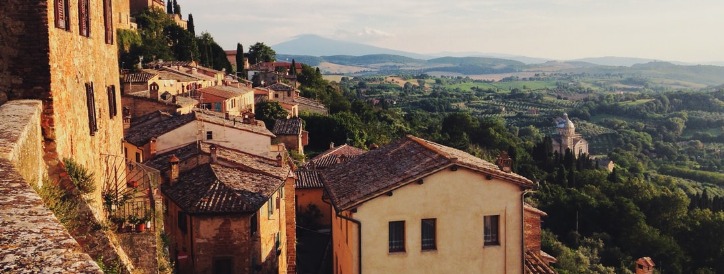
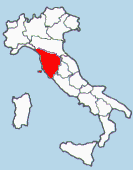
Cities: Florence is the capital of Tuscany. Other important cities are Siena, Pisa, Arezzo, Pistoia, Lucca, Livorno, Grosseto, Massa Carrara.
Things to do in Tuscany Italy
In addition to art, Tuscany offers outstanding nature sceneries, such as the National Park of the Argentario and the Isola of Elba. In Siena, there is the beautiful Piazza del Campo. In Florence, there are fifteenth-century shops on the Ponte Vecchio. Pisa has the Campo Dei Miracoli, with the famous Leaning Tower.
Art
Tuscany is unrivaled as a cradle of all-time art. One can find examples of every age and style: from the Etruscan civilization (Fiesole, Chiusi, Volterra, Populonia) to Roman monuments and ruins; from the Romanesque architecture to the impressive Gothic cathedrals, to the exceptional artistic explosion of the Renaissance.
Museums
Florence has preserved its masterpieces and great works of architecture over the centuries. The most important collection of paintings in the world is offered by the Uffizi Gallery; visitors can enter the very interesting Designs and Print Room; the collection of self-portraits. Great paintings can be seen in the Gallery of Palazzo Pitti, with Tiziano’s and Raffaello’s masterpieces.
Florence also has the Museum of the Costume and the Museum of the Carriages; the beautiful Italian gardens can be admired in the Giardino di Boboli. In the Museum of the Opera del Duomo the famous “Pietà” by Michelangelo can be admired. Then, there are the Museum of the Bargello, St. Mark’s Museum, the Academy Gallery and the Ethnologic Museum Stibbert.
Pisa, an ancient Roman naval base and maritime republic, has the Museum of the Sinopie, which holds the preparatory drawings for the frescoes, and the National Museum of St. Matteo. Siena is a well-preserved medieval city; here there are the Civic Museum, which houses the Histories of Alexander III, the Museum of the Opera Metropolitana and the Pinacoteca Nazionale, with Senese painting. Tradition and art are strong everywhere: in Arezzo the Gallery and the Medieval and Modern Museum can be visited.
10. Umbria
The Umbria region is largely rugged and mountainous, with a lush forest and abundant water resources. The Apennines cut through it, forming various valleys. The Trasimeno Lake is relatively huge in this location.
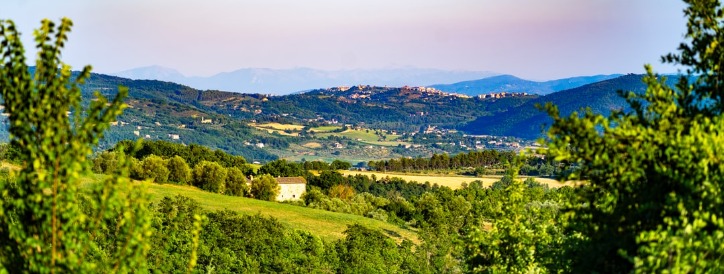
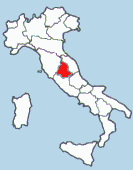
Cities: Perugia is the regional capital. Other important cities are Assisi, Gubbio, Orvieto, Todi, Spoleto,Terni.
Things to do in Umbria Italy
Rich in history and in nature, Umbria offers the Falls of the Marmore, which are the highest in Italy; the sources of the Clitunno and Mount Subasio. The Basilica of Santa Maria degli Angeli and the Rocca Maggiore. The ancient city of Spoleto offers the Roman Theater and Druso’s Arch. Near Perugia, people can visit the Ipogeo del Volumni, which is an Etruscan tomb.
Art
In Umbria, the traces of the Etruscan civilization are remarkable, as visitors can see in Todi, Bettona, Orvieto, and Perugia. Spoleto has important Roman remains; Spello is a city, where the Romans left some impressive remains. Other important Roman works can be found in Assisi and Gubbio. The Romanesque architecture thrived in this region at the beginning of the twelfth century: some beautiful examples are the Cathedrals of Spoleto and Assisi, St. Silvestro, and St. Michele in Bevagna. The Gothic style reached very high levels, and imposing examples are present in almost every city. The Renaissance can be seen in magnificent monuments in Perugia, Gubbio, and Todi, but it enjoyed a smaller development than other styles.
Museums
In Perugia, there is the National Gallery of Umbria, which is one of the most important exhibitions of Gothic painting, with masterpieces by Duccio di Boninsegna, Beato Angelico, Piero Della Francesca. The National Archaeologic Museum of Umbria houses a splendid and very rich Etruscan collection. Assisi, the birthplace of St. Francis, one of the greatest figures of Christianity, has the superb Basilica of San Francesco with the world-famous Giotto’s frescoes, showing in 28 splendid paintings the life of the Saint; the Pinacoteca Civica and the Cathedral’s Museum. Spoleto has the Gallery of Contemporary Art.
In Gubbio. there is the Civic Museum, which holds the famous “Eugubine tables”: seven bronze plates, from the second century B.C. Foligno can offer tourists the Archaeologic Museum and the Pinacoteca Civica.
11. Marches
Marches is an essentially mountainous and hilly region, bordering the Adriatic Sea. The terrain is harsh, with narrow valleys, deep canyons, and numerous rushing, occasionally impassable streams (Gorge of Furlo). The coastline consists of gently rolling hills and flat plains intersected by rivers.
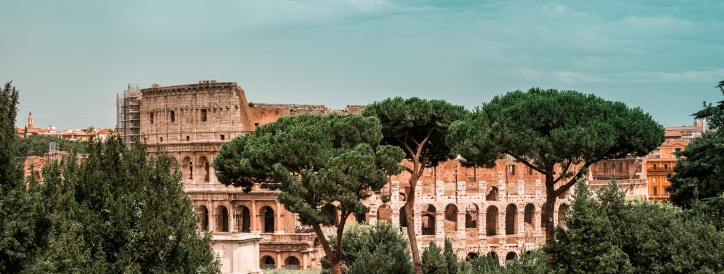
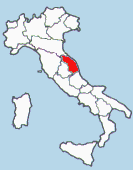
Cities: The regional capital is Ancona. Other important cities are Ascoli Piceno, Pesaro, Urbino, and Macerata.
Things to do in Marches Italy
On the seaside Fano, the coastline, and the panoramic area of Mount Conero. Then, there are the Gorge of Furlo, Pesaro, and Urbino with their beautiful view and environs.
Art
Numerous noteworthy remnants of the Roman Age can be seen in Ascoli, Fano, Ancona, Fermo, Urbisaglia, and near Macerata. The districts surrounding Ancona and Ascoli have outstanding examples of Romanesque architecture with Byzantine features. Ascoli and Tolentino both have Gothic architecture. The region’s creative grandeur peaked during the Renaissance, especially to the presence of important local artists such as Raphael and Bramante.
Museums
In Ancona, visit the National Museum of the Marches, which houses an interesting local archaeology collection; the Diocesan Museum of the Cathedral, which houses valuable medieval relics; and the Pinacoteca Civica, which includes major pictorial masterpieces (Tiziano, Lotto). The Ascoli Pinacoteca Comunale houses a large picture exhibition. The Civic Museums in Pesaro house paintings, ceramics from the famed Renaissance “botteghe” (art studios), and archaeologic remains.
The National Gallery of the Marches in Urbino houses the most important collection of Marchigiana art (Raphael, Tiziano, Piero Della Francesca); fourteenth-century frescoes, paintings, ceramics, and sacred relics can be admired in the Museo del Duomo “Albani”; and Raphael’s native house is interesting and worth a visit. Macerata’s Biblioteca Comunale holds very ancient incunabula, while the Museum of the Carriages houses very rare exhibits of ancient vehicles.
12. Latium
The Latium region, with its undulating hills, spans from the Apennines’ western buttresses to the Tyrrhenian Sea. The environment is diversified, with flatlands, hills, and calcareous highlands on the coast and in the interior. The lakes of Bolsena, Vico, Bracciano, Albano, and Nemi are formed by the craters of extinct volcanoes in Latium’s four very ancient volcanic areas.
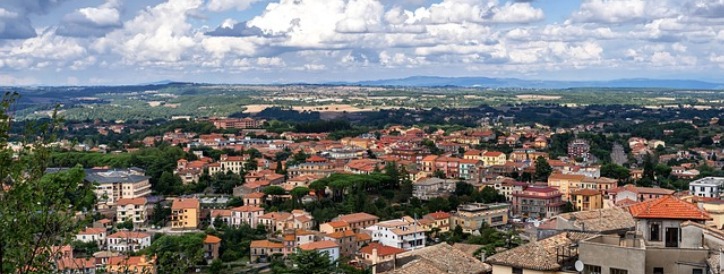
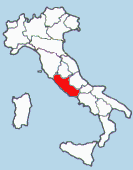
Cities: Rome, the capital of Italy, as well as the region. Other important cities are Frosinone, Latina, Viterbo and Rieti.
Things to do in Latium Italy
In the center of Rome, we can admire the Roman Forum, the imposing arid universally known Colosseum, and the Cathedral of St. Peter. Visitors can admire the archaeological excavations, visit the quaint quarter of Trastevere, go to Tivoli to see Villa Adriana.
Art
Latium is the birthplace of Roman civilization and is exceptionally rich in magnificent antiquities from various ages. The Etruscan civilization’s vestiges are exceptional and may be discovered at Veio, Vulci, Tarquinia, and Cerveteri. The region has traditionally been the focus of active artistic activity, with the presence of the Church serving as a focal point from the Middle Ages until the Eighteenth Century (the Vatican City, the seat of the papacy, is in the heart of Rome).
Museums
The National Museum in Rome includes the world’s most important archaeologic collections, while the Capitoline Museum houses the oldest classic statues. Greek and Roman sculptures can be found in the Palazzo dei Conservatori Museum. There are Etruscan vases and paleochristian sarcophagi to be seen. The Pinacoteca Capitolina houses important works of art. Civic papers from from the Middle Ages to the current day can be found in the Museum of Rome.
Visitors should not miss the Barracco Museum, which has Assyrian, Babylonian, Egyptian, and Etruscan treasures, as well as the National Museum of Castel Sant’Angelo. The Doria Pamphili Gallery has a priceless private photographic collection. There is also the National Gallery of Ancient Art, the Borghese Museum and Gallery, and the Villa Giulia National Museum. Numerous remarkable artworks can be found in the enormous complex of the Vatican Museums.
13. Abruzzo
The Abruzzo region is primarily hilly and mountainous, stretching from the Apennines to the Adriatic Sea. It encompasses Central Italy’s highest and largest massifs, with rough and pristine landscapes and peaks that frequently exceed 2,000 meters. The broad sandy plains of the Adriatic are replaced by rugged and rocky beaches in this region. There are large amphitheaters at L’Aquila and Sulmona, as well as in the Ficino’s dried hydrographic basin. There are geological karst formations with grottoes and “Dolines” here. The Abruzzo National Park, located in the western half of the region, is home to a variety of animal species, including the Marsican Bear and the Gray Wolf.
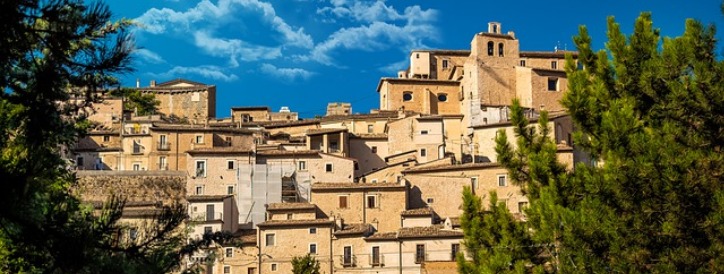
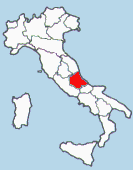
Cities: L’Aquila is the regional capital. Pescara, Chieti and Teramo are other important cities.
Things to do in Abruzzo Italy
Sulmona, Roccaraso and Scanno: the Highland of the Five Miles and the National Park.
Art
The region is rich in remains of the Roman civilization, which can be found at Minternum near L’Aquila, Alba Fucens, Iuvanum a Montenerodomo. Art saw its most creative period during the Middle Ages. Noteworthy cathedrals and abbeys, with a patent local imprint, were erected between the eleventh and the nineteenth century. The most important example is Santa Maria di Collemaggio, in L’Aquila. Sculpture attained a special development. An important and typical goldsmith’s craft, which produced splendid objects, dates back to the sixteenth century. Precious Renaissance examples can be found in Sulmona and L’Aquila.
Museums
In L’Aquila, one can visit the National Museum of Abruzzi, with sections for paleontology, archaeology and medieval art (painting, sculpture, jewelry, ceramics, lace, sacred ornaments, glass windows). Pescara has the Museum of the Folk Traditions of Abruzzo, which holds a didactic archaeologic exhibition.
The Pinacoteca Civica in Teramo displays beautiful majolicas. Chieti’s National Museum of Antiquities houses important relics of the ancient Italics, Greeks and Romans, including some remarkable pieces such as the Warrior of Capestrano, of the fourth century B.C.
14. Molise
Molise is a region of hills and mountains, north of the Gargano cape that faces the Adriatic Sea. It is a continuation of the scenery of Abruzzo, and until 1963, Abruzzo and Molise were a single administrative entity. It is one of the southern regions with the most waterways, stretching from the Apennine watershed to the Adriatic Sea. Other rivers, tributaries of Volturno, discharge into the Tyrrhenian Sea after passing through Campania.
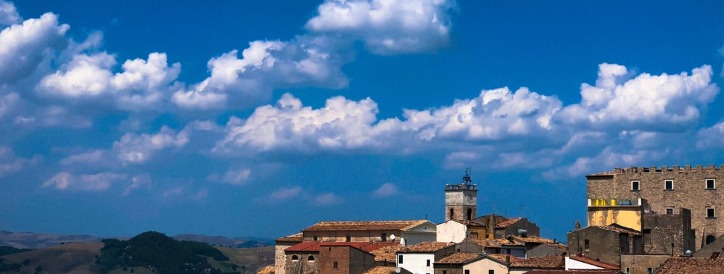
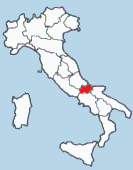
Cities: The capital of Molise is Campobasso. Isernia is the capital of the respective province.
Things to do in Molise Italy
Visitors to Campobasso can enjoy the old center and the magnificent battlemented castle of the Longobard period, as well as the Romanesque churches of San Bartolomeo and San Giorgino. The church of Sant Antonino Abate displays the collection of carvings and wooden sculptures of sixteenth-century masters of Molise. The Romanesque Santa Maria Della Strada, with its fifteenth-century Gothic sepulcher, rises some fifteen kilometers from the city.
The Civic Museum at Isernia houses Samnitic epigraphs and sculptures, and the fourteenth-century Fontana Della Fraterna is also worth seeing.
Tourists visiting Pastena can see the majestic Sanctuary of the Addolorata of Castelpetroso, which is encircled by a dense forest.
Art
The cycle of ninth-century murals in the crypt of San Lorenzo in San Vincenzo al Volturno distinguishes Molise in the history of Italian art. This cycle is a one-of-a-kind event of significant importance in terms of style and age. The Romanesque structures demonstrate the influence of the neighboring Apulia region. The medieval building examples are fascinating. The civic palaces are designed in the Baroque style, with Roman and Neapolitan elements.
15. Campania
The Campania region overlooks the Tyrrhenian Sea and has one of Italy’s most beautiful coasts. The hinterland is primarily mountainous, with uneven massifs broken up by valleys and plains here and there. We can observe wonderful and fascinating islands in front of the Gulf of Naples and Salerno: Capri, Ischia, and Procida.
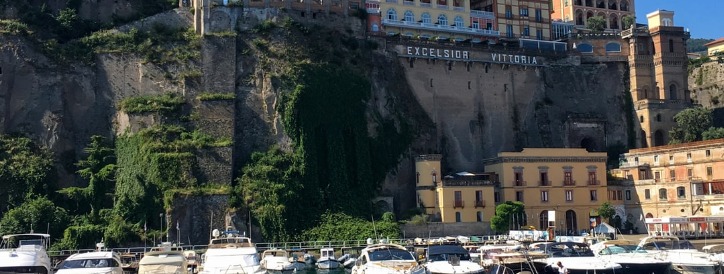
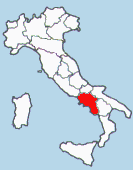
Cities: Naples is the regional capital. Other important cities are Caserta, Benevento, Salerno, and Avellino.
Things to do in Campania Italy
The splendid Amalfi coast; the marvelous islands; the Imperial Villa in Capri; the Royal Palace of Caserta with its splendid Italian gardens; Herculaneum and Pompeii.
Art
Campania is exceptionally rich in classical antiquity remains, which may be found in Herculaneum, Pompeii, Paestum, and Cuma. The Roman Imperial Age is rich in amphitheaters, triumphal arches, villas, bridges, and tombs. Paleolithic art can be found in Naples and Nocera, while Longobard Age architectural relics can be found in Capua and Benevento. There are numerous magnificent cathedrals in the Byzantine and Arab-Norman styles. The Royal Palace of Caserta is the most outstanding example of Baroque architecture.
Museums
The National Museum in Naples houses one of the world’s most important archaeologic collections (statues by the great Greek masters Policleto, Lisippo, and Prassitele); Pompeii mosaics and wall paintings; and a collection of gems, miniature bronzes, domestic objects, and utensils. The Capodimonte Museum and Galleries houses all-time visual masterpieces by Titian, Michelangelo, Raphael, and Caravaggio, as well as sculptures, tapestries, and ceramics. The National Museum of San Martino is divided into three sections: history, art, and monuments.
The Museum of the Sannio in Benevento has an important archaeologic room with Samnitic, Italic, and Italiot antiquities, as well as an amazing collection of money, including exceedingly rare Longobard Princes gold pieces. The Cathedral Museum and Provincial Museum in Salerno both house priceless works of art.
16. Apulia
Apulia is the peninsula’s easternmost region, with a lengthy coastline facing the Ionian and Adriatic Seas. Apulia is basically a flatland with large desert plains, terraces, and water-stressed tablelands. The Murgia upland and coast include spectacular karst formations (grottoes and “Doline” hollows). The shores are generally high and drop precipitously into the sea in the Gargano district; in other areas, they are sandy or rocky, though usually flat.
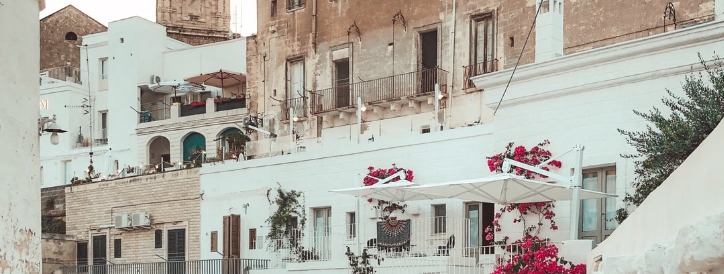
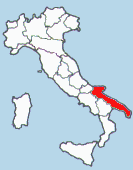
Cities: Bari is the regional capital. Brindisi, Foggia, Lecce, and Taranto are the capitals of the respective provinces.
Things to do in Apulia Italy
The Gargano area and the coastline from Brindisi to Santa Maria di Leuca; Alberobello with its typical “trulli” houses.
Art
There are numerous noteworthy megalithic monuments (Dolmens and Menhirs). Canne della Battaglia and Ignazia are two significant archaeological sites. The Roman ruins are significant throughout the region. Romanesque architecture created outstanding monuments, such as the cathedrals of Bari, Trani, Barletta, Molfetta, Bitonto, and Ruvo di Puglia.
Bari, Gioia del Colle, Lucera, and Castel del Monte all have interesting and impressive castles in thirteenth-century Byzantine-Arab architecture. The Baroque achieved immense magnificence and left several outstanding specimens, particularly at Lecce.
Museums
Tourists to Bari can visit the University Palace, which houses the important Archaeologic Museum, which houses Neolithic and Bronze Age antiquities, burial urns, ceramics, and bronze from the necropolis.
Lecce is home to the Provincial Museum, which houses sculptures and Roman architectural remnants, as well as the Museum of the Arts of Salento Folk Traditions. The Provincial Archaeologic Museum of Brindisi houses collections of coins, vases, and bronzes. Taranto’s National Museum is the most important for Magna Graecia history.
In Foggia, there’s the Civic Museum, which has a prehistoric department and a remarkable paleochristian epigraph, and the Pinacoteca, which houses works by local masters from the nineteenth and twentieth centuries.
17. Basilicata
The Basilicata region is mountainous, arid, and scarcely watered. It has two coastlines, one in the center of the Gulf of Taranto in the Ionian Sea, and a tiny one on the Tyrrhenian Sea, with the famous sea resort of Maratea. The bare mountain landscapes slope down to the Ionian Sea.


Cities: Potenza is the regional capital; Matera is the capital of the other province.
Things to do in Basilicata Italy
In Matera, visitors can see the “Sassi”, the typical houses and churches dug into the “tufa” crag. In the Gulf of Policastro, tourists can enjoy the fascinating Maratea, an important resort of the Tyrrhenian Sea; on the Ionian Sea, the Antiquarium of Metaponto.
Art
The region is rich in archaeological relics, dating back to the most remote times. Remains of the Greek era can be found in Metaponto (the Palatine Tables), while ruins of the Roman Age can be seen in Venosa. Tourists can admire noteworthy examples of medieval art in Venosa and Cerenza (Romanesque style). The architecture presents Arab-Byzantine and French influences in Matera, Melfi and Lagopesole. In this region, the Baroque style shows an evident Neapolitan influence.
Museums
The Provincial Archaeologic Museum of Potenza houses an important prehistoric collection, an interesting ethnographic section, and numerous Greek and Latin inscriptions. In Matera, the Ridola National Museum holds Paleolithic relics and ceramics which date back to the Neolithic, Bronze, and Iron Ages. The Pinacoteca d’Errico displays noteworthy paintings of the Neapolitan school of the seventeenth and eighteenth centuries. The Archaeologic National Museum of Melfi houses prehistoric, protohistoric, and Roman relics.
18. Calabria
Calabria is the extreme southwestern region of Italy, washed by the Tyrrhenian Sea and the lonian. It is an essentially mountainous region, with a high central Apennine ridge, which crosses it lengthwise. The mountain slopes are overgrown with thick woods. The coastlines present landscapes of wild beauty.
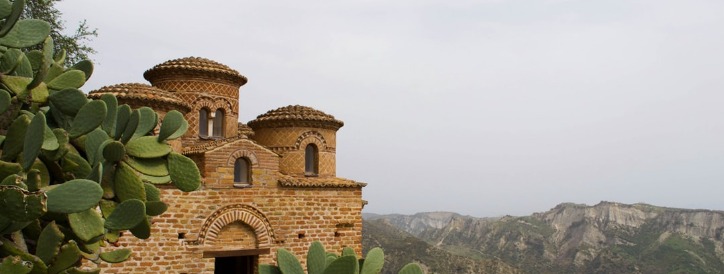

Cities: The regional capital is Catanzaro. Reggio Calabria is the seat of the Regional Council. Cosenza, Crotone and Vibo Valentia are the other important cities.
Things to do in Calabria Italy
Tourists can make excursions to the Sila district and its lakes. Moreover, there are Villa San Giovanni (on the straits of Messina), Sibari, Crotone, and the isle of Capo Rizzuto.
Art
The region has a rich heritage of creative civilization remains: archaeological investigations have revealed ancient colonies in Sibari, Crotone, Catanzaro, Locri, and Vibo Valentia.
Baths, theaters, and bridges from the Roman era can be found in Cosenza and Reggio Calabria. The religious structures include Byzantine elements, dating back to the period when the region was part of the Byzantine Empire. During the thirteenth century, the Gothic style spread widely. The Renaissance style is prominent in the paintings. Several monuments show the influence of the Baroque period.
Museums
Catanzaro‘s Provincial Museum has magnificent remains dating from the Neolithic period to the Greek-Roman Age, as well as an impressive currency collection.
The National Museum in Reggio Calabria houses one of Italy’s most important archaeologic collections, including Paleolithic, Byzantine, and Arab art, Bronze and Iron Age relics, tomb outfits, pictorial tables, and the world-famous Bronzes of Riace, two great bronze statues of warriors from the fifth century B.B.
In Cosenza, one may visit the Museo Interdiocesano, which houses the Cathedral’s treasures, as well as the Civic Museum, which houses prehistoric bronzes, Paleolithic manufactured products, and instruments.
19. Sicily
Sicily is the biggest island in the Mediterranean, separated from the Italian peninsula by the strait of Messina. It has important mountain groups: Peloritani, Nebrodi, Madonie, and Iblei. The plains are scanty, with the exception of the area around Catania. The coasts offer a landscape of fascinating beauty almost everywhere; groups of marvelous smaller islands are scattered around the coast (the Eolie or Lipari, Ustica, the Egadi. the isle of Pantelleria, and the Pelagie). The Etna, rising in the center of a volcanic area of Sicily, is the highest active volcano in Europe (3,323 meters). The isles of Stromboli and Vulcano are also active volcanoes.

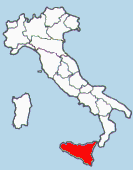
Cities: Palermo is the regional capital of Sicily, which is ruled by a special statute. Other important cities are Messina, Catania, Agrigento, Syracuse, Trapani, Ragusa, Enna, and Caltanissetta.
Things to do in Sicily
Taormina, the Etna, and the majestic monuments in the Valle Dei Templi of Agrigento.
Art
Sicily was a Greek colony during the Classic Age, and the Hellenic heritage is remarkable (Syracuse, Gela, Agrigento, Selinunte, and Eraclea). Important Roman remnants can be seen at Taormina, Syracuse, Tindari, Solunto, Eloro, and Patti. The next artistic development took place during the Norman period, which left churches and palaces of Arab-Byzantine influence. The Gothic style can be seen in the imperial castles of Catania and Syracuse; the Catalonian influences produced elaborated architectural forms during the fifteenth century. The Baroque style, of exceptional wealth, thrived in Palermo, Catania, Ragusa, Noto, and Comiso.
Museums
In Palermo, the Archaeologic Museum, which displays a noteworthy Etruscan collection, sculptures, and metopes of the temples of Selinunte; is the Regional Gallery of Sicily, with the most important art collection of the island. The Civic Museum of Catania houses archaeology, ancient and modern art, and relics of local history.
In Syracuse, tourists can visit the Regional Museum and the Regional Gallery, with very rich archaeological and pictorial collections.
In Agrigento, there is the Regional Archaeologic Museum.
20. Sardinia
Sardinia is the Mediterranean’s 2nd largest island, characterized by a succession of hilly massifs, hills, and narrow highlands. The coasts are craggy and rocky, with magnificent beaches of very fine sand and innumerable inlets. The seaside scenery, particularly along the Costa Smeralda, is among the most magnificent in the world. In front of the coastlines, there are numerous little, lovely islets.
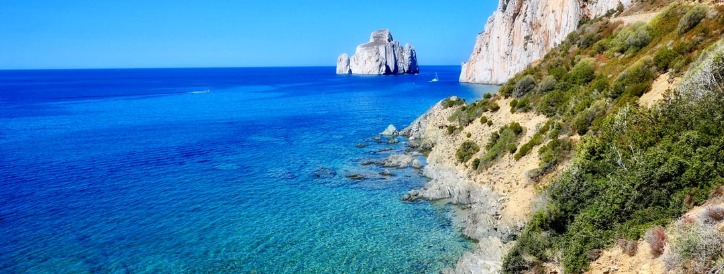
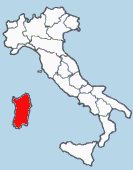
Cities: Cagliari is the capital of Sardinia, ruled by a special statute. Other important cities are Sassari, Nuoro, and Oristano.
Things to do in Sardinia
The Costa Smeralda and the island of the Maddalena (Bocche di Bonifacio); the islands of San Pietro and Sant’Antioco, near Cagliari. Tourists should not omit a visit to the archaeologic excavations of Tharros and to the cork-oak woods, at the foot of the Gennargentu.
Art
The megalithic “Tombs of the Giants”; the “domus dejanas” (houses of the witches), tombs carved into the rock; and the “nuraghi” are very ancient and strange prehistoric and protohistoric remnants. Nuraghi, truncated cone towers in massive stone and fortified houses of the island’s first occupants, number approximately 7,000 and can be found throughout the island. Tharros and Nora have Phoenician and Roman ruins, and Porto Torres and Cagliari have Roman antiquities. Under the control of the Spanish House of Aragon, the Gothic-Catalan style flourished on the island.
Museums
The most notable museum on the island is the National Archaeologic Museum of Cagliari, which houses prehistoric graves, megalithic temples and tombs, the famed tiny bronzes, and documentation from the Punic and Roman times.
We can explore the archaeological and anthropological areas of the Sanna Museum and Pinacoteca in Sanna.
In Nuoro, the Regional Museum of Costume is interesting. Oristano’s Antiquarium Alborense houses paintings by sixteenth-century Sardinian masters as well as an archaeological part.
